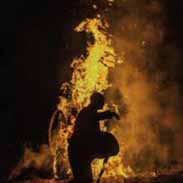Dermatology Flashcards, test questions and answers
Discover flashcards, test exam answers, and assignments to help you learn more about Dermatology and other subjects. Don’t miss the chance to use them for more effective college education. Use our database of questions and answers on Dermatology and get quick solutions for your test.
What is Dermatology?
Dermatology is a branch of medicine that deals with the diagnosis, treatment and prevention of skin related diseases and disorders. It encompasses a wide variety of medical conditions including skin cancer, psoriasis, eczema, acne and many more. Dermatologists are trained to diagnose and treat these conditions by examining the patient’s skin visually or through biopsies in order to confirm their diagnosis. The treatments prescribed by dermatologists can range from topical creams or ointments to laser therapy for more severe cases.The most common types of skin diseases treated by dermatologists are acne, eczema, rosacea, warts and psoriasis. Acne is an inflammatory condition caused by clogged pores which leads to red pimples appearing on the face or body as well as blackheads and whiteheads. Eczema is characterized by dry itchy patches on the skin which may be inflamed or scaly in appearance. Rosacea causes facial redness due to dilated blood vessels whereas warts are small rough growths caused by viruses such as human papillomavirus (HPV). Finally Psoriasis is an autoimmune disorder where patches of scaly silver-white raised lesions appear on the body due to overactive production of new cells at sites where they shouldn’t normally be produced. Apart from these common conditions there are other less recognizable ones such as actinic keratosis which is pre-cancerous cells found in sun exposed areas leading to discolored patches; alopecia which results in patchy hair loss; vitiligo which causes depigmentation causing white spots on certain areas of the body; keloids resulting in raised scars after healing wounds; hives which manifest themselves in bumps accompanied with itching all over the body; melasma producing dark patches mainly around cheeks nose forehead etc.; cutaneous T cell lymphoma presenting itself via reddish lumps forming underthe skins surface among others . Given its importance for diagnosing various ailments affecting our bodies it becomes imperative that we visit our local dermatologist if any suspicious looking changes occur either suddenly or gradually so that appropriate measures can be taken for early detection & timely treatment thereby avoiding serious consequences like malignancy later down the line .

























